Best Substitutes For Xanthan Gum In Baking
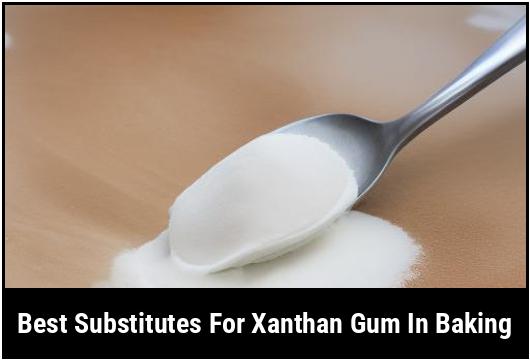
Xanthan gum is a common food additive used in baking to improve the texture and structure of gluten-free baked goods. It is a versatile ingredient that helps bind ingredients together, prevents the formation of ice crystals in frozen desserts, and adds thickness to sauces and dressings. However, xanthan gum is not always readily available or may not be suitable for everyone due to dietary restrictions or allergies. In such cases, it becomes necessary to find suitable substitutes for xanthan gum in baking.
Key Takeaways
- Xanthan gum is commonly used as a binding agent in gluten-free baking.
- Xanthan gum can be replaced with various substitutes, including psyllium husk, agar agar, guar gum, cornstarch, arrowroot powder, and gelatin.
- The choice of substitute depends on the desired texture and dietary restrictions.
Why You Need A Substitute For Xanthan Gum In Baking
There are several reasons why you may need a substitute for xanthan gum in baking. It could be due to:
-
Unavailability: Xanthan gum may not be readily available in some areas or can be expensive to purchase.
-
Allergies or dietary restrictions: Xanthan gum is derived from corn, wheat, or soy, making it unsuitable for those with allergies or dietary restrictions. Finding an alternative that suits their needs is essential for these individuals.
-
Personal preference: Some people may simply prefer to use natural substitutes or experiment with different ingredients in their baking.
Types Of Substitutes For Xanthan Gum In Baking
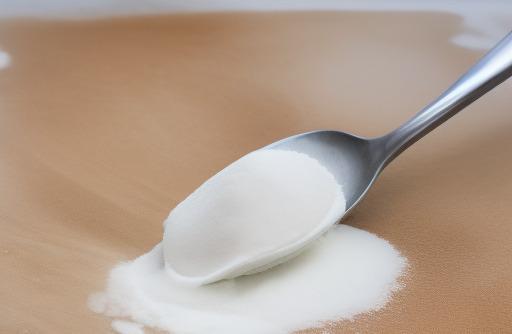
There are several alternatives available that can effectively replace xanthan gum in baking. Here are some popular options:
-
Psyllium Husk: Psyllium husk is a natural and gluten-free alternative to xanthan gum. It is derived from the seed husks of the Plantago ovata plant. When mixed with liquid, psyllium husk forms a gel-like consistency, which acts as a binding agent in baked goods. It is especially useful in gluten-free bread recipes, as it helps provide structure and elasticity similar to xanthan gum.
-
Agar Agar: Agar agar is a plant-based gelatin substitute derived from seaweed. It is commonly used in vegan and vegetarian recipes as a thickening agent. Agar agar can be used as a substitute for xanthan gum in baking, particularly in recipes that require a gel-like texture. It is a flavorless and odorless powder that can be dissolved in warm liquid before adding it to the batter.
-
Guar Gum: Guar gum is another plant-based thickener and binding agent commonly used in gluten-free baking. It is derived from the guar bean and is known for its ability to mimic the texture and elasticity of gluten. Guar gum can be used as a substitute for xanthan gum in baked goods such as bread, muffins, and pancakes.
-
Cornstarch: Cornstarch is a pantry staple that can be used as a substitute for xanthan gum in certain baking recipes. It is primarily used as a thickening agent and can help provide structure to gluten-free baked goods. However, keep in mind that cornstarch may alter the texture and taste of the final product.
-
Arrowroot Powder: Arrowroot powder is a starch derived from the rhizomes of the arrowroot plant. It is a natural thickener and can be used as a substitute for xanthan gum in gluten-free baking. Arrowroot powder is known for its neutral taste and ability to create a light and airy texture in baked goods.
-
Gelatin: Gelatin is a protein obtained from animal collagen and can be used as a substitute for xanthan gum in baking. While it is not suitable for vegetarian or vegan diets, gelatin can be an effective binding agent in recipes that call for xanthan gum. It is particularly useful in recipes that require a set or gel-like texture, such as puddings or cheesecakes.
Best Substitutes For Xanthan Gum In Baking
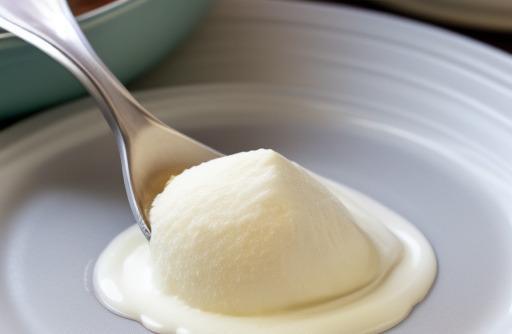
-
Psyllium Husk: Psyllium husk is a versatile substitute for xanthan gum in baking, especially in gluten-free bread recipes. To replace xanthan gum, use an equal amount of psyllium husk powder. For example, if a recipe calls for 1 teaspoon of xanthan gum, use 1 teaspoon of psyllium husk powder instead.
-
Agar Agar: Agar agar can be used as a substitute for xanthan gum in recipes that require a gel-like texture. To replace xanthan gum, dissolve 1 teaspoon of agar agar powder in 1 cup of warm liquid. Allow it to cool and set before adding it to the batter. Adjust the amount depending on the desired consistency.
-
Guar Gum: Guar gum is an excellent substitute for xanthan gum in gluten-free baking. Use a 1:1 ratio to replace xanthan gum in recipes. Start with the same amount called for in the recipe and adjust as needed to achieve the desired texture.
-
Cornstarch: To replace xanthan gum with cornstarch, use half the amount called for in the recipe. For example, if a recipe calls for 1 tablespoon of xanthan gum, use 1/2 tablespoon of cornstarch. Keep in mind that cornstarch may alter the texture and taste of the final product.
-
Arrowroot Powder: Arrowroot powder can be used as a substitute for xanthan gum in a 1:1 ratio. Replace xanthan gum with an equal amount of arrowroot powder. Adjust the amount as needed based on the recipe’s requirements.
-
Gelatin: Replace xanthan gum with gelatin in a 1:1 ratio. Ensure that the gelatin is fully dissolved in warm liquid before adding it to the batter. Gelatin works best in recipes that require a set or gel-like texture.
Choosing The Right Substitute For Xanthan Gum In Baking
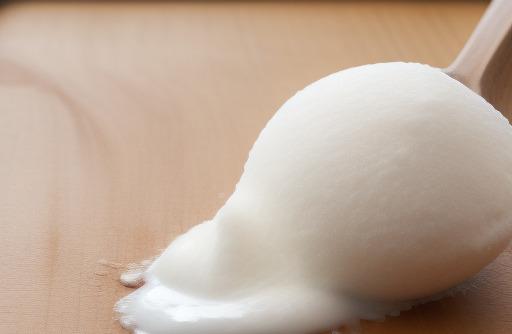
Choosing the right substitute for xanthan gum depends on several factors, including the desired texture, dietary restrictions, and availability of ingredients. Here are some considerations to keep in mind:
-
Texture: Different substitutes can provide different textures in baked goods. If you are looking for a gel-like texture, agar agar or gelatin can be excellent choices. Consider psyllium husk or arrowroot powder for recipes that require structure and elasticity.
-
Dietary Restrictions: Some substitutes, such as psyllium husk, agar agar, and arrowroot powder, are gluten-free and suitable for those with dietary restrictions. If you have specific dietary requirements, ensure that the substitute you choose aligns with those needs.
-
Availability: Consider the availability of the substitute in your region. While xanthan gum is a widely available ingredient, substitutes like psyllium husk or agar agar may be more challenging to find in local stores. If necessary, you can explore online retailers or specialty stores.
Cooking With Substitutes For Xanthan Gum In Baking
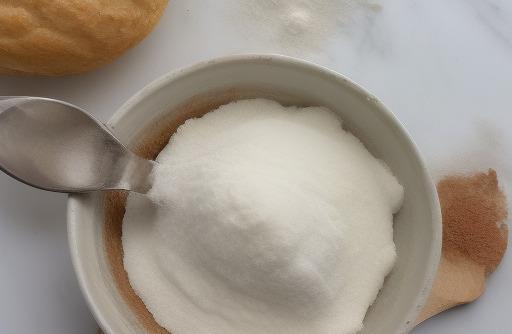
When cooking with substitutes for xanthan gum in baking, it is essential to keep a few tips in mind to ensure successful results:
- Follow the recommended ratios: Start by using the recommended ratio of substitute to xanthan gum in the recipe. Adjust the amount if needed to achieve the desired texture and consistency.
Pro Tip: It’s always a good idea to test a small batch first when using a new substitute or making significant substitutions in a recipe. This way, you can experiment and make adjustments before committing to a full batch.
-
Mix well: Ensure that the substitute is thoroughly mixed into the batter or dough to ensure even distribution and proper binding.
-
Allow for setting time: If you are using substitutes like agar agar or gelatin, allow the mixture to cool and set before adding it to the batter or dough. This will ensure that it functions as a binding agent and provides the desired texture.
-
Adjust baking time and temperature: Some substitutes may require adjustments to the baking time and temperature to achieve optimal results. Keep an eye on the baking process and make necessary adjustments based on the texture and appearance of the baked goods.
Recipes Using Substitutes For Xanthan Gum In Baking

Here are a few recipe ideas that use substitutes for xanthan gum in baking:
-
Gluten-Free Bread: Replace xanthan gum with psyllium husk in a gluten-free bread recipe. The psyllium husk will provide the necessary structure and elasticity for the bread to rise. Follow the recommended ratio of substitute to xanthan gum for best results.
-
Vegan Cheesecake: Agar agar is the perfect substitute for xanthan gum in a vegan cheesecake recipe. It will help create a firm and creamy texture without the need for animal-based ingredients.
-
Gluten-Free Pancakes: Use guar gum as a substitute for xanthan gum in a gluten-free pancake recipe. It will help bind the ingredients together and add the desired fluffiness to the pancakes.
-
Thickened Sauces: To thicken sauces or dressings, replace xanthan gum with cornstarch or arrowroot powder. Start with half the amount called for in the recipe and adjust as needed.
Storage And Shelf Life Of Substitutes
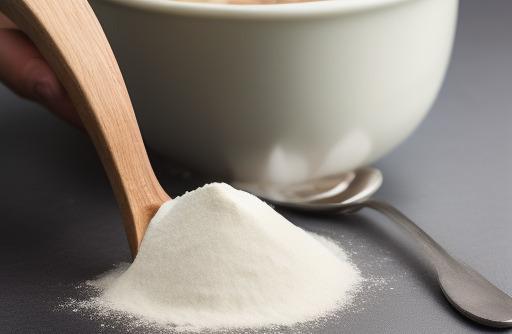
When using substitutes for xanthan gum in baking, it is important to store them properly to maintain their quality and effectiveness. Here are some guidelines:
-
Psyllium husk, agar agar, and arrowroot powder: Store these substitutes in a cool, dry place in airtight containers. They have a long shelf life and can last for several months if stored properly.
-
Gelatin: Store gelatin in a cool, dry place away from direct sunlight. Once opened, it should be sealed tightly to prevent moisture absorption. Gelatin can last for several months when stored properly.
-
Guar gum: Guar gum should be stored in a cool, dry place in an airtight container. It has a shelf life of about 1-2 years when stored properly.
-
Cornstarch: Cornstarch should be stored in a cool, dry place away from direct sunlight. It has a shelf life of about 1-2 years when stored properly.
Conclusion
While xanthan gum is a commonly used ingredient in gluten-free baking, there are several effective substitutes available. Whether you have dietary restrictions, allergies, or simply prefer natural alternatives, there is a substitute that can meet your needs. Experiment with different substitutes and ratios to find the best option for your baking projects. Remember to consider texture, dietary restrictions, and availability when choosing a substitute. With these substitutes, you can continue to enjoy delicious and perfectly textured baked goods without relying on xanthan gum. Happy baking!
Pro Tip: When using substitutes for xanthan gum, it’s essential to understand that they may alter the taste and texture of the final product. Experiment with small batches and make adjustments as necessary to achieve your desired results.
FAQS
What Exactly Is Xanthan Gum Used For In Baking?
Xanthan gum is a popular additive used in baking as a thickener, stabilizer, and binder. It works by absorbing water and swelling, creating a gel-like texture that adds volume and moisture to baked products.
What Are The Reasons For Seeking An Alternative To Xanthan Gum In Baking?
While xanthan gum is generally regarded as safe, some people may be allergic to it. In addition, it can be quite expensive, and some bakers may prefer to use more natural ingredients.
What Are Some Natural Alternatives To Xanthan Gum That Can Be Used In Baking?
Some natural alternatives to xanthan gum in baking include psyllium husk powder, chia seeds, flax seeds, guar gum, and arrowroot powder. These ingredients can be used individually or in combination, depending on the recipe.
How Much Of The Substitute Should Be Used For Every 1 Tsp Of Xanthan Gum?
The amount of substitute required for every 1 tsp of xanthan gum varies depending on the recipe, but as a general rule, psyllium husk or chia seeds should be used in a 1:1 ratio, while guar gum and arrowroot powder should be used in a 2:1 ratio.
Are There Any Specific Tips Or Tricks To Keep In Mind When Using Substitutes For Xanthan Gum In Baking?
Yes, it’s important to note that some substitutes may impart a slightly different texture or taste to the final product, so experimentation is key. Additionally, it’s recommended to mix the substitute directly into the dry ingredients before adding the wet ingredients, as this can help to evenly distribute it throughout the batter.
Sources
About the Author Jenny
I'm Jenny, a housewife with an unwavering passion for food. My culinary journey began with my grandmother's kitchen, and it's now a full-fledged food blog. I've turned my love for cooking into a creative outlet, sharing recipes and stories with a global community of fellow food enthusiasts. It's proof that being a housewife can also mean pursuing your passions and savoring life's delectable moments.
